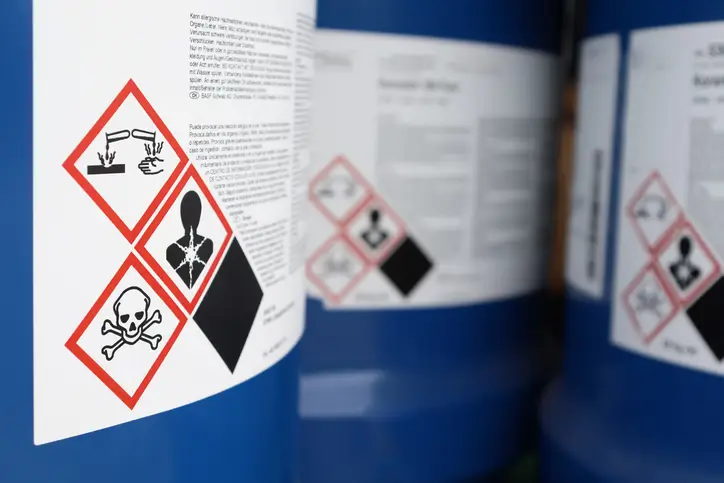Impact of CHIPS Act on Occupational Health and Safety
OSHA Strained: Can They Enforce Safety Amidst CHIPs Act?
As America moves ahead with the CHIPs Act, an already understaffed OSHA is set to face an uphill battle to implement its safety standards. The authority trusted to keep America’s workers safe had 752 inspectors to ensure the safety of more than 107 million private-sector workers in the country.
OSHA's Challenge: Protecting Workers Amidst Industrial Boom
With the CHIP Act resulting in a $280 billion boost in America’s industrial sector, the challenges will keep piling up for OSHA. However, there are some ways the overstretched safety authority can still protect workers amidst the emerging challenges.
Main Objectives of the CHIPS Act
Here you will read some of the main objectives of the CHIPS Act, mentioned below;

Promoting Domestic Semiconductor Manufacturing
The motive is this act is to incentivize and support the growth of semiconductor manufacturing in the United States. It even provides funding and incentives for domestic semiconductor research, development, and manufacturing.

CHIPS Act: Jobs Boost for US Semiconductors
Another major aim of the CHIPS Act is to create jobs within the semiconductor industry and its related supply chains. Boosting domestic semiconductor manufacturing is expected to generate employment opportunities in different areas such as construction, manufacturing, research and development, etc.

CHIPS Act: Strengthening US Semiconductor
One of the key impacts of the CHIPS Act is to enhance and improve national security by reducing the reliance on foreign semiconductor suppliers. However, semiconductor suppliers are crucial components in a wide range of technologies, including those used in defense and critical infrastructure.

Economic Competitiveness
The United States aims to maintain its technological edge and competitiveness on the global stage by investing in semiconductor technology. This is particularly important in areas like artificial intelligence, 5G communications, and other advanced technologies.
Some Crucial Statistics on the CHIPS Act
Before delving into this read, it is important to consider some important statistics about the CHIPS Act and its significance;
$250 Billion
According to a report by McKinsey & Company, the CHIPS and Science Act of 2022 allocates $250 billion for scientific and semiconductor R&D.
$20 Million
The measure allocates $20 million for the protection of US Supreme Court justices and their families.
Act of 2021’s
The CHIPS for America Act of 2021’s initiatives are now funded under the act, which went into effect on August 9, 2022.
The legislation establishes the greatest publicly sponsored research and development program in the history of the nation.
The CHIPS Act aims to address supply chain problems that have impeded manufacturing and research, as well as to restore American primacy in the semiconductor industry.

Workforce Skill Development
The CHIPS Act’s focus on improving workforce skills is commendable, but it also results in an influx of novice workers joining the construction industry. There are lots of inexperienced workers who are more prone to severe illnesses, injuries, and accidents. OSHA must need to address the need for enhanced training and supervision of these new entrants to mitigate the potential safety risks.

Fast-Paced Projects
One of the key features of the CHIPS Act is its emphasis on expeditious project execution. This could lead to a faster pace of construction projects. Faster project timelines can potentially compromise safety as workers may face tighter deadlines and increased pressure to complete tasks quickly. OSHA will need to adapt its safety regulations to ensure that speed does not come at the cost of worker safety.

Technological Advancements
The CHIPS Act encourages the incorporation of advanced construction technologies to expedite projects. While these technologies can enhance efficiency and reduce costs, they also introduce new safety concerns. OSHA will need to stay abreast of evolving technology in the construction sector and adapt its safety regulations and inspection procedures to address the associated risks.

Increased Workforce and Construction Activity
The CHIPS Act aims to boost construction activities across the country by allocating significant funds to infrastructure projects. While this is promising for economic growth and job creation, it can lead to an influx of construction workers and increased construction sites. With a larger workforce and more construction sites in operation, OSHA faces the challenge of effectively regulating and ensuring the safety of workers on these sites. An increase in construction activities may strain OSHA’s resources and necessitate additional inspections and oversight to maintain safety standards.

Resource Limitations
OSHA already faces resource constraints, including staffing and funding limitations. The increased demand for safety oversight in the construction sector under the CHIPS Act may strain OSHA’s resources, potentially affecting the agency’s ability to conduct thorough inspections and enforce safety standards effectively.

Revision of Safety Standards
OSHA should assess and, if necessary, revise existing safety standards to accommodate the fast-paced nature of construction projects under the CHIPS Act. New regulations may need to address specific issues related to tight project timelines and the incorporation of advanced technologies, with an emphasis on maintaining worker safety.

Integration of Technology
Embracing technology is essential for OSHA to keep pace with the construction sector’s advancements. However, it is crucial for OSHA to invest in the development of digital tools and resources to streamline inspections, data collection, records, and safety reporting. Using drones and cameras is one of the best options to monitor hazards properly and implement safety procedures properly. This will enable them to get a quicker response to safety violations and improve communication with construction companies.

OSHA Safety Training and Education
To mitigate the risks associated with a potentially inexperienced workforce, OSHA should collaborate with industry stakeholders to enhance training programs and provide comprehensive safety education. This could include the development of specialized training modules for new entrants, as well as ongoing training and skill development for experienced workers to keep up with evolving construction technologies.

Increased Collaboration
The CHIPS Act’s success in boosting the construction sector will depend on collaboration among various stakeholders, such as; government agencies, construction companies, labor unions, and safety organizations. OSHA should actively engage with these parties to ensure that safety remains a top priority. Regular communication, joint safety initiatives, and the sharing of best practices can help in creating a safer working environment.

Enforcement of Legal Laws and Compliance
OSHA should strengthen its enforcement capabilities by increasing penalties for safety violations and conducting more frequent inspections. A strong enforcement stance can serve as a deterrent to non-compliance and further promote safety in the construction industry.
Conclusion
At last, it has been concluded that the CHIPS Act usually focuses on revitalizing the construction sector which holds immense importance for economic growth and job creation. But, the thing is there are several challenges it presents in terms of occupational health and safety, which cannot be ignored. However, OSHA needs to proactively prepare for the fast-projects, increased workforce, & changing technology. By enhancing safety training and embracing technology, OSHA can effectively address these challenges and ensure that the construction industry flourishes with an unwavering commitment to worker safety
CEO of OSHAOutreachCourses, a platform that provides online workplace safety training. Passionate about the integration of technologies in making worksites safer for manual workers.












